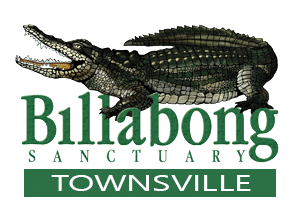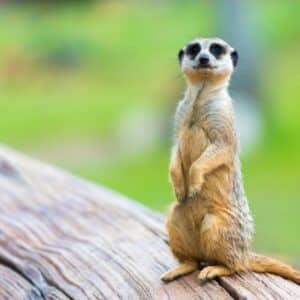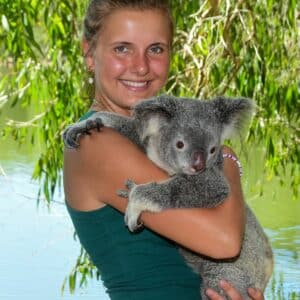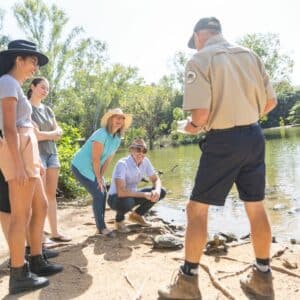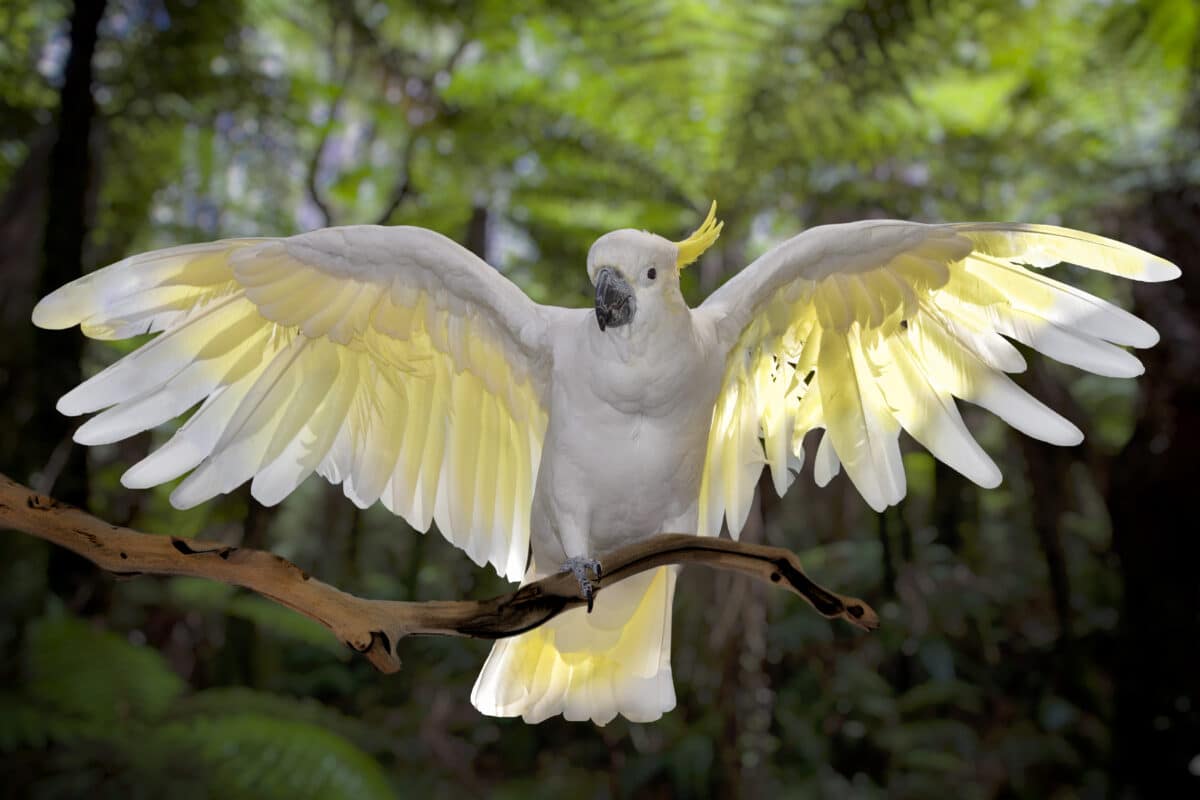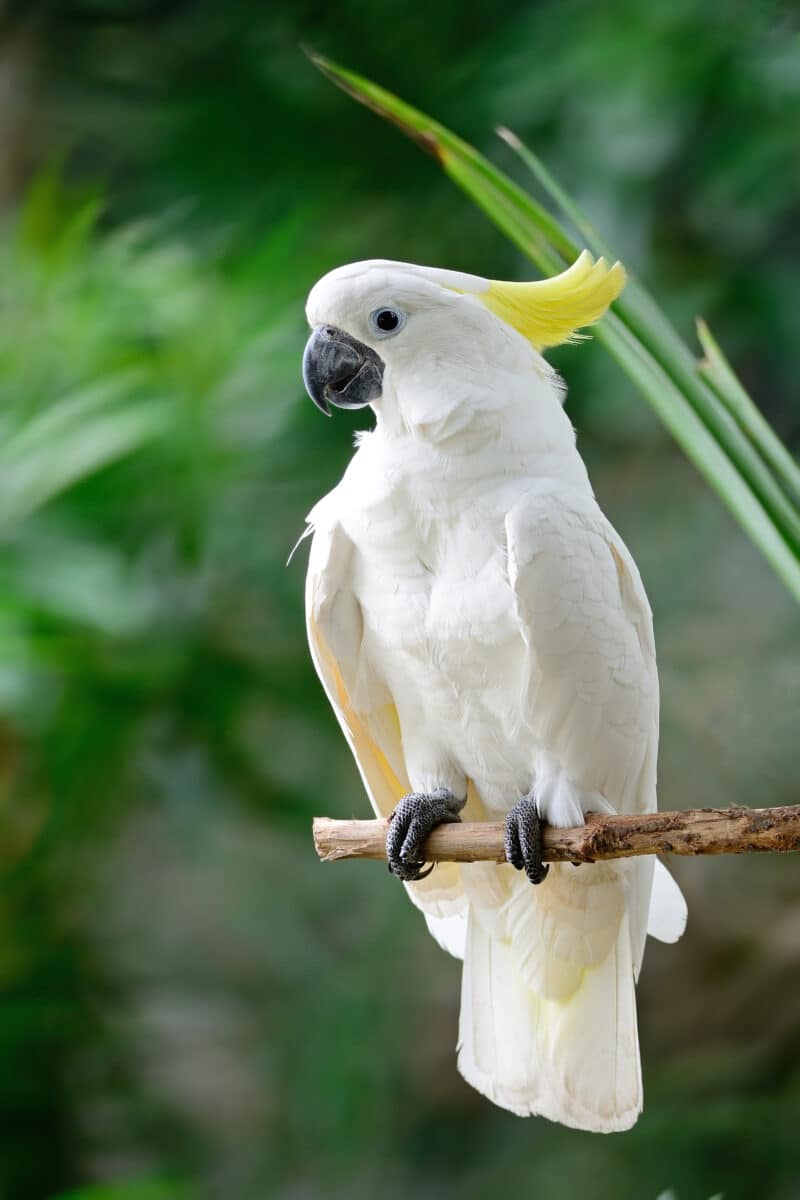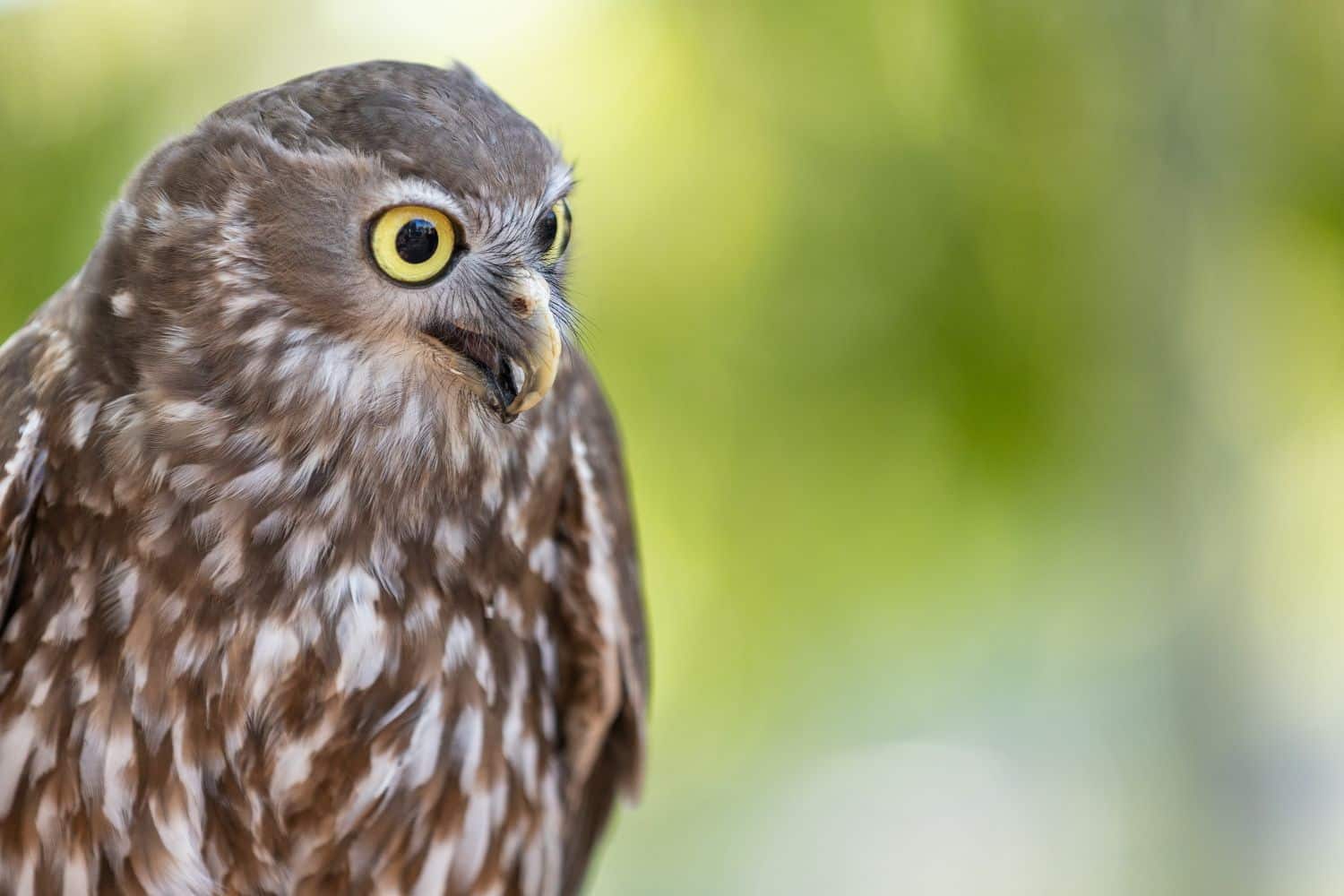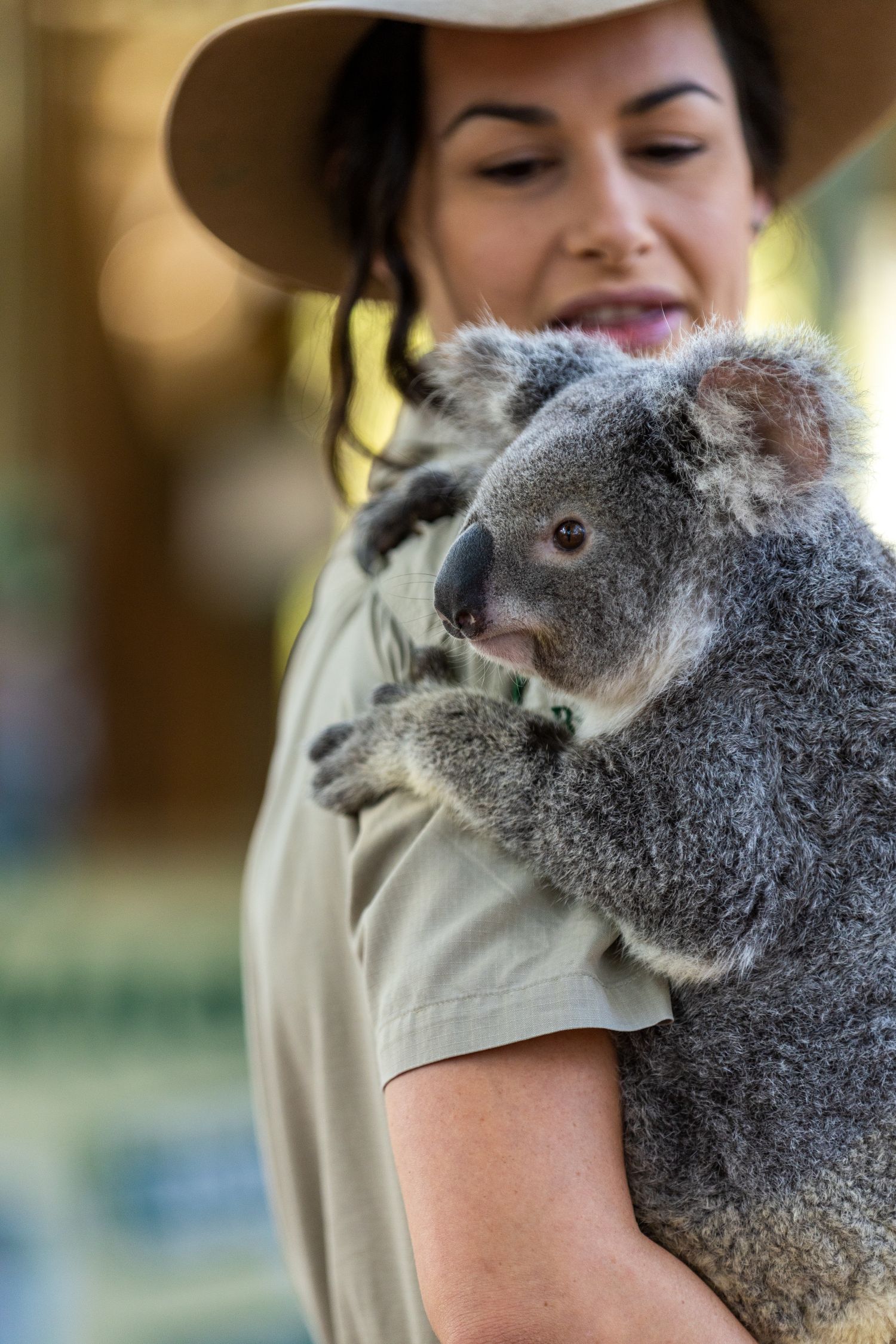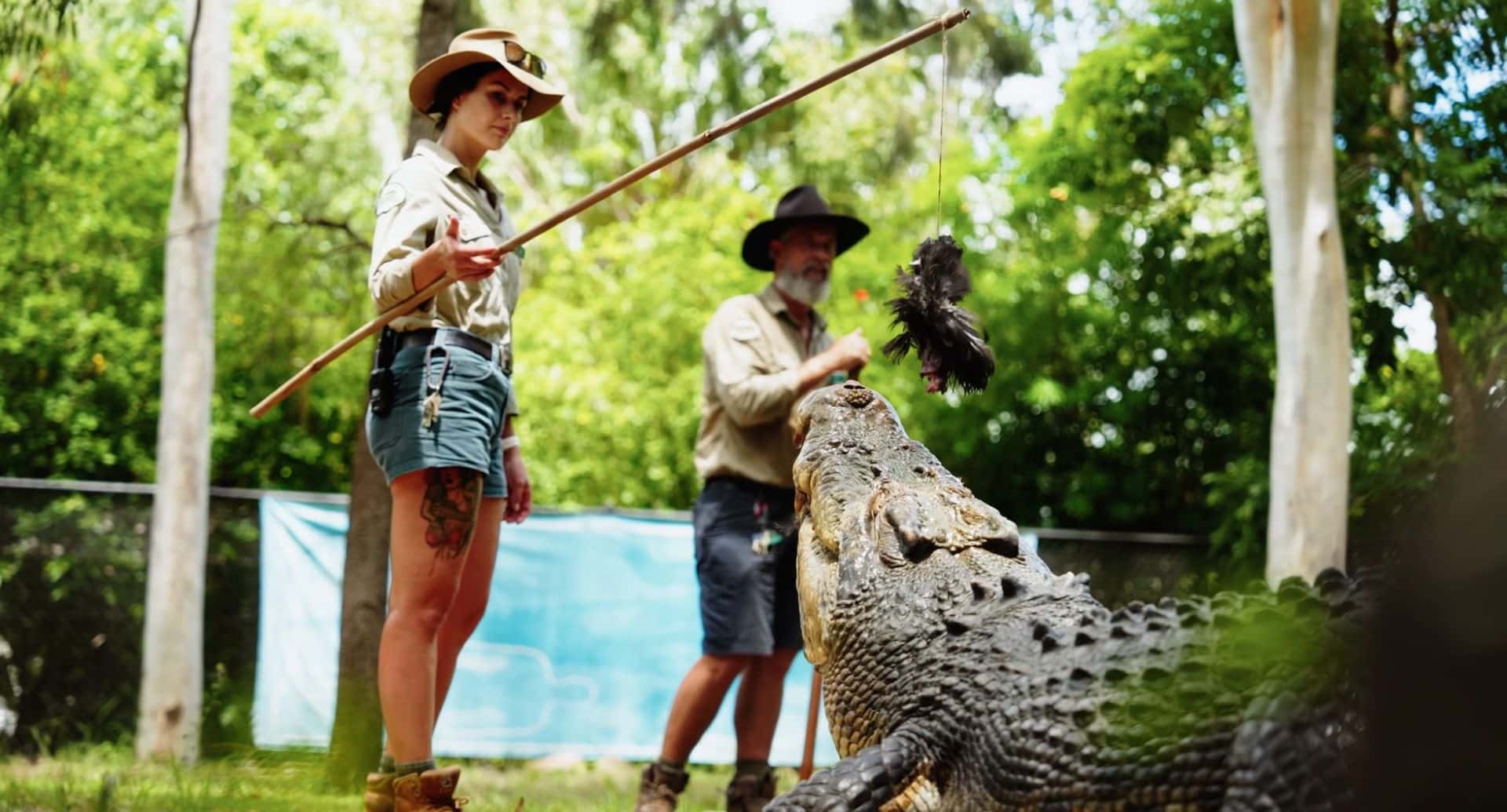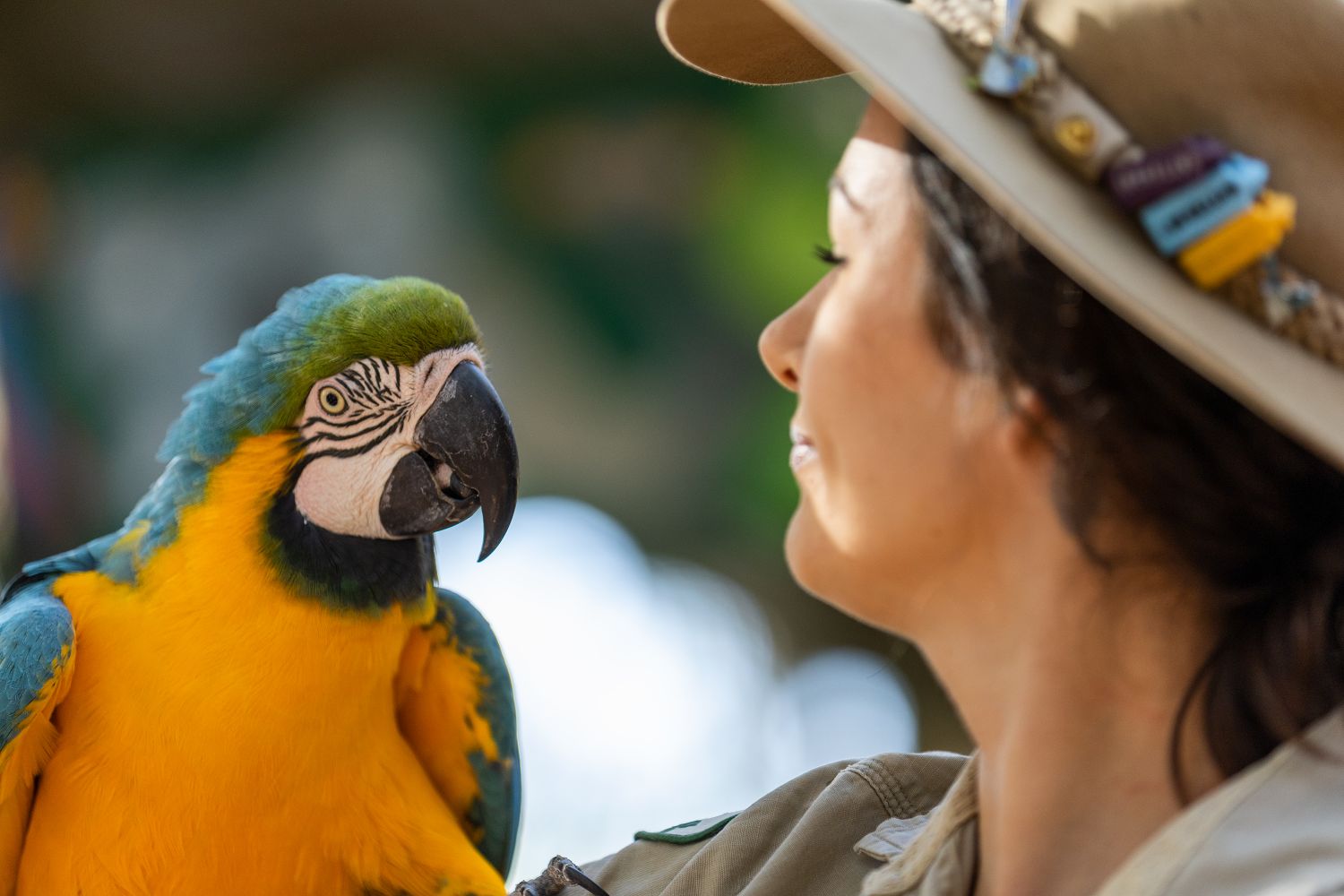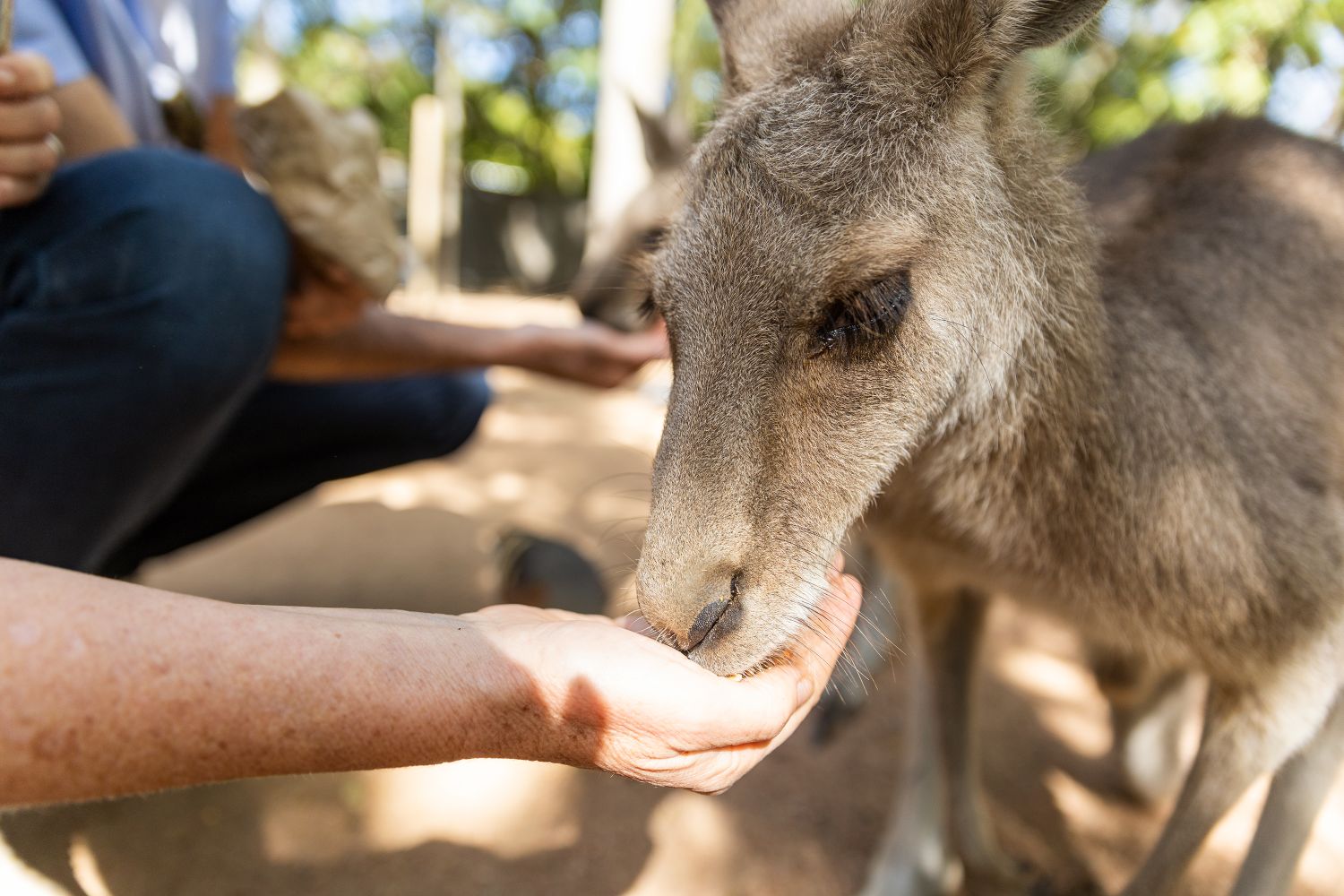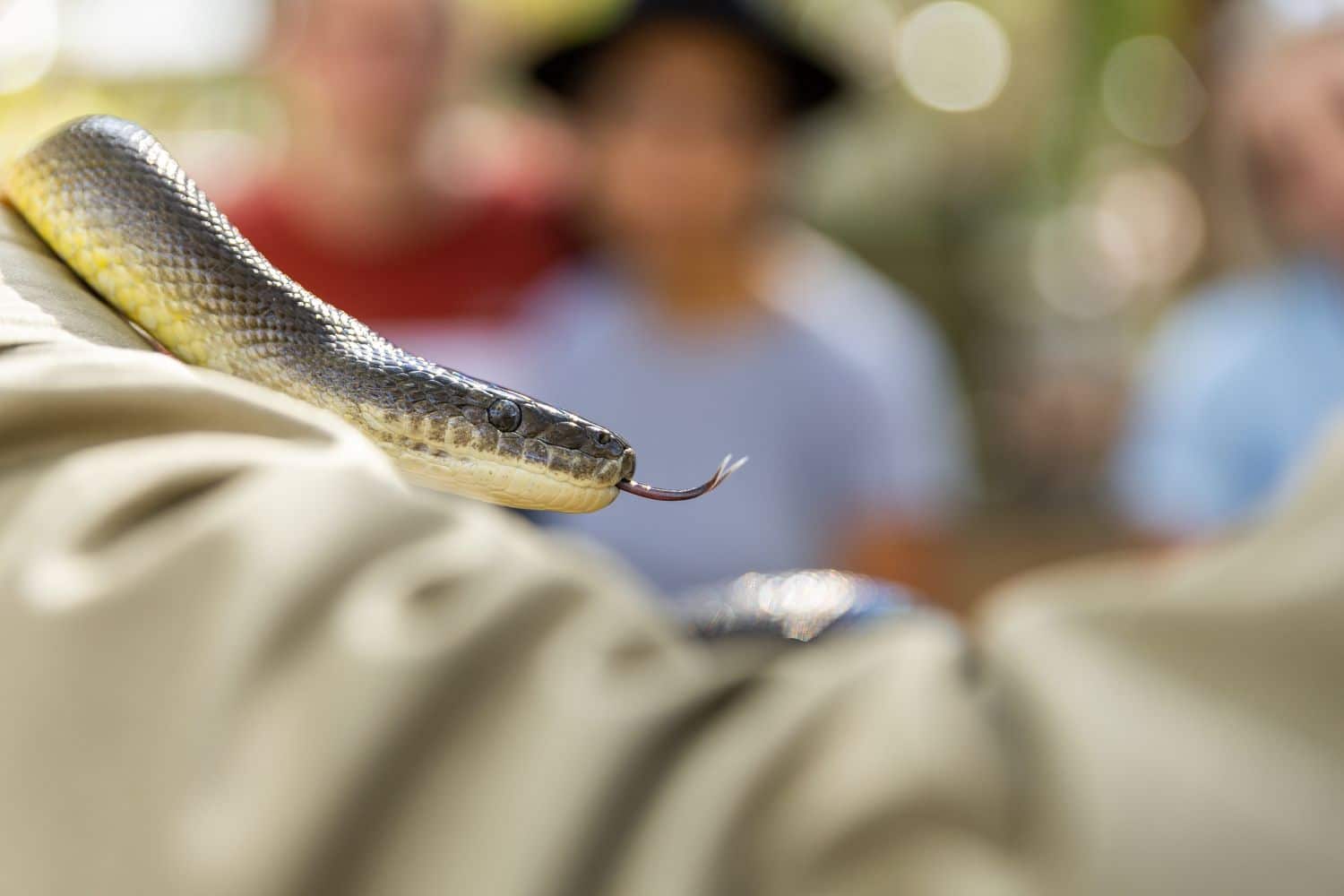With its strident call and brilliant white feathers, it is a common sight throughout open timbered country in the eastern and northern parts of the country.
WHAT’S IN A NAME?
The scientific name Cacatua galerita means ‘capped cockatoo’. Kakatua is the Indonesian word for a cockatoo, and the species name derives from the Latin galer meaning cap, referring to the bright yellow crest. Sulphur-crested cockatoos are members of the Psittacidae family of birds, or the ‘true’ parrots. All have stocky bodies, medium-sized wings, strong, hooked beaks, and feet with two forward-facing and two rear-facing toes.
WHAT DO THEY LOOK LIKE?
These birds really are unmistakable. Their all-over brilliant white plumage is visible from many kilometres away, silhouetted against distant hills or outlined against the horizon. Among the largest of our parrots, they can reach half a metre in length (18 inches).
The other distinctive feature is the long, recurved crest of bright yellow feathers.
The crest seems to reflect the bird’s emotions. When it is excited or alarmed, the feathers are fully extended, reaching far forward over the bird’s head. A bird at rest, or one which doesn’t feel well, will have its crest feathers flattened against the back of its head.
A less obvious feature is the subtle wash of pale yellow colouring along the cheeks and ear coverts, and on the underside of the wing and tail feathers. The yellow colour can be seen when the bird is silhouetted in flight against the sky – kind of a lemon meringue pie.
Like all parrots, the sulphur-crested cockatoo has a powerful beak; the beak is black but appears grey because of the powdering of white dust used for grooming its feathers. A bird with a shiny black beak is generally unhealthy, possibly a victim of psittacine beak and feather virus. The feet are also dark grey with black claws. As in all parrots, there are two forward-facing toes, and two rear-facing toes.
Males and females look alike; only up close and in strong light can it be noticed that the eye of the female has a lighter, reddish-coloured iris. Males have very dark brown irises. From a distance, eyes of all birds look black. Males have slightly larger heads, and stand taller than females, but the birds have to be seen in pairs for this difference to be noticeable.
WHAT DO THEY SOUND LIKE?
Sulphur-crested cockatoos are not the most melodious birds in the Australian bush. They have a variety of calls, none of them pretty.
While a flock is feeding, a few birds will remain in the tops of the trees, on the lookout for danger. If they spot a predator such as a large kite or a snake, they give a harsh, explosive cry of warning, and the other birds will immediately take to the air, squealing and screeching hoarsely in a cacophony of protest.
Birds that are at rest, moving among the branches high in a tree, nipping off leaves and twigs, often make a high-pitched screeching cry, like badly worn wheel bearings.
When flying home to their evening roost, they call loudly and incessantly, making a grating, querulous cawing noise. In flocks of over a hundred birds, jostling for a perch among the trees, these cries can become deafening.
Like other parrots, pet cockatoos can mimic all sorts of sounds, learning to imitate human speech, barking dogs, power tools, and other household noises.
WHERE DO THEY LIVE?
Sulphur-crested cockatoos are widely distributed throughout open timbered country in northern, eastern and southeastern mainland Australia, as well as Tasmania and several smaller offshore islands. They have been introduced to Perth in Western Australia.
There is only one race in Australia, grading from smaller birds with heavier bills and shorter crests in the north, to larger birds with smaller beaks and shorter crests in the south.
The Sulphur-crested cockatoo also lives in Papua New Guinea, New Britain, Aru Island, and Indonesia.
In northern Australia these cockatoos gather as breeding pairs or small flocks throughout the year; farther south they congregate in large flocks of hundreds of birds outside the breeding season.
Flocks have a preferred night-time roosting site, often along watercourses. As evening falls the noise at these sites is deafening, as the birds gather and jostle for position, screeching and cawing till darkness falls.
WHAT DO THEY EAT?
Sulphur-crested cockatoos are mainly seed-eaters, feeding on seeds of grasses, herbaceous plants, trees and grain crops. They also eat bulbous roots, berries, nuts and leaf buds, and some insects and their larvae.
The strong beak and tongue are well-adapted for this diet. The pincer-like beak easily pierces the toughest seed shell. The tongue extracts the kernel inside, and the broken halves of the husk are dropped to the ground. The tongue is so sensitive and flexible that the Cockatoo can store uneaten seeds inside its beak while it selects and opens one seed at a time.
While a flock is feeding on the ground, a few birds will remain as sentinels in the tops of nearby trees. If they see a predator such as a kite or a snake, they raise their crest and give a loud, harsh warning cry. The whole flock then takes to the air, and wheels around, cawing and screeching, till the danger is past.
While not feeding, cockatoos will roost high up in trees, often stripping off leaves and branches and dropping them to the ground.
BREEDING AND RAISING THE YOUNG
Breeding season is from August to January in the south-east, and from May to September farther north.
In courtship, the male struts towards the female with the crest erect and tail feathers spread wide. He also nods and bobs and flicks his head from side to side, emitting a low chuckling call. These displays are often performed during the process of nest preparation and many such displays usually precede the actual mating.
Sulphur-crested cockatoos prefer to nest in hollow limbs of eucalyptus trees, usually high up over watercourses. Along the Murray River they have also been seen to nest in cliff holes.
Both male and female birds shred the inside of the limb to create a layer of chewed wood dust on the bottom of the nest. The female lays two (or rarely three) white, oval-shaped eggs.
Both male and female incubate the eggs, which hatch after about 30 days. Chicks remain in the nest for about six weeks, then fly out to join the rest of the flock.
Chicks remain close to their parents even after they have reached full size. They will sidle up to the parent along a tree branch, giving a pathetic, wheezing call. The parent then regurgitates food from the crop, pumping it into the young bird’s beak. This pumping causes the chick to make a rhythmic, high-pitched chirping noise as it is being fed.
Sulphur-crested cockatoos reach sexual maturity at about six or seven years of age. They live several decades in the wild and are known to live to near 100 years old in captivity.
STATUS IN THE WILD AND THEIR RELATIONSHIP TO MAN
Sulphur-crested cockatoos are common and abundant in the wild in eastern Australia. Thousands of them are also kept as pets, both in Australia and throughout the world.
They are fully protected by law in eastern Australian states. Only captive-bred birds raised by licensed breeders can legally be kept or sold.
In Western Australia, where sulphur-crested cockatoos were introduced in the 1930s, they are a declared agricultural pest. They damage grain crops and compete with native species for food and nest sites. The Department of Agriculture removes wild birds where possible to try to reduce the size of flocks.
There is a black market in these and other parrot species because of the high price for pet birds overseas; sulphur-crested cockatoos are worth thousands of dollars to collectors in Europe.
Loss of habitat could be a problem in the future, because these parrots rely on older trees with hollowed-out limbs for their nest sites.
Parrots in general are intelligent birds and sulphur-crested cockatoos in particular have adapted well to human encroachment on their natural habitat. They become quite tame around people and have learned to live in farmlands and suburban areas.
In eastern Australia, sulphur-crested cockatoos can cause extensive damage to vine and grain crops in the southern parts of their range. They can cause havoc in young tree plantations, and on managed areas of grass such as golf courses and cricket grounds. They have also been known to damage houses and other structures, by chewing on soft timber. Anyone who keeps a cockatoo as a pet knows how destructive they can be, chewing through wire cages and wooden perches.
On the other hand, sulphur-crested cockatoos in Victoria have learned to pick through piles of cattle droppings in paddocks, to find undigested grain to eat. This is actually beneficial to the grazier, because they break up the droppings, returning nutrients to the soil and allowing the grass to grow through.
The very features that make cockatoos adaptable to new situations in the wild – their intelligence, natural curiosity and adaptability – also make them appealing as pets.
They are lively, entertaining birds, who become very devoted to their owners. They can learn to mimic human speech, and apply it in appropriate situations; for example, they will greet visitors with “Hello” and call “Bye Bye!” when they leave.
But the decision to keep a sulphur-crested cockatoo as a pet should not be taken lightly. They can live to be well over 50 years, so a healthy bird can easily out-live its owner. They need a very large, strong cage, preferably made of metal and with a sturdy latch. Cockatoos easily learn how to open flimsy cage doors. They have a very powerful beak and will bite hard if annoyed. They are also extremely loud and will call for hours in their cage if feeling lonely or bored.
Their natural curiosity and agility mean they need very large enclosures and lots of stimulation to keep them healthy. In the wild, sulphur-crested cockatoos live in large flocks, so it is unnatural for them to be kept without the company of other birds.
Birds that are kept in small cages, with no distractions such as toys to play with, and without the company of other birds or of people will often pluck their own feathers until they are completely naked.
The Sulphur-crested cockatoo is a loud, brash, comical resident of bush, farmland and suburbia, and is not likely to disappear from the Australian landscape in the foreseeable future.
